Date: 27 February 2016 Temperature: 20ºC Weather: Sunny with clear skies
Merritt Island is a barrier island located off of the Atlantic Ocean on the coast of Florida. The island is home to NASA’s Kennedy Space Centre and the Merritt Island National Wildlife Refuge where the two share a common boundary.
Merritt Island National Wildlife Refuge
History and Management
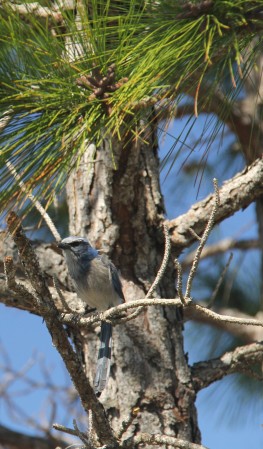
The 140,000 acre wildlife refuge is managed by the U.S. Fish and Wildlife Service and is one of the largest areas of undeveloped land on Florida’s east coast. The 43 mile long Barrier Island is home to over 500 species of wildlife, supporting 93 federally listed endangered species including the Florida Scrub Jay (Aphelocoma coerulescens).
Merritt Island was originally acquired by NASA in 1963 due to its proximity to the ocean which allowed them to transport parts on bodies of water and also expel rocket debris during launches. However, the area was not deemed to be vital for the space program and the land was turned over to the U.S. Fish and Wildlife Service.
The habitat in the refuge is primarily managed by fire and water. As the area would naturally be affected by wildfires due to lightning strikes, prescribed burns are employed to mimic wildfires and create the open areas required by the Florida scrub-jay, gopher tortoise (Gopherus polyphemus) and indigo snake (Drymarchon couperi).
Fire also helps to maintain the health of the native plant life such as the slash pine (Pinus elliottii) whose serotinous cones require fire to open and release their seeds. Unfortunately, fire has no effect on controlling the invasive Brazilian pepper tree (Schinus terebinthifolius) which has to be controlled using herbicides.
Water is managed through a series of dykes and 76 impoundments that allow the water and salinity levels to be maintained for habitat requirements and wildlife diversity and also to control the salt marsh mosquito (Aedes sollicitans) which requires dry mud to lay its larvae.
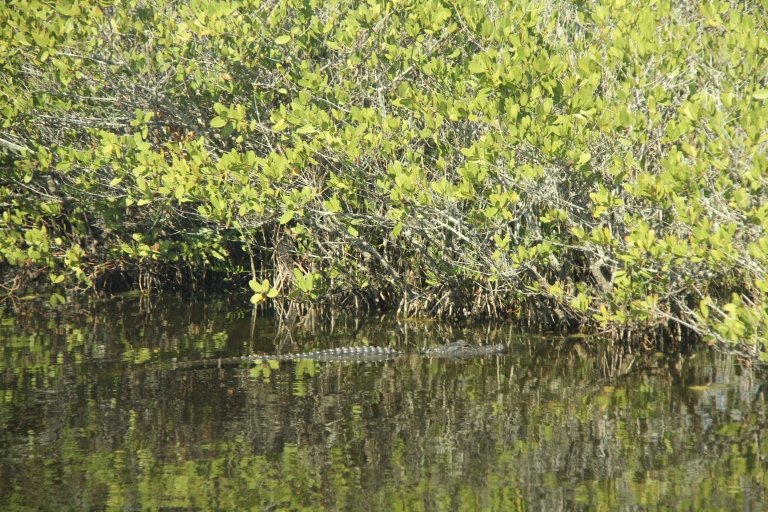
Habitat and Wildlife
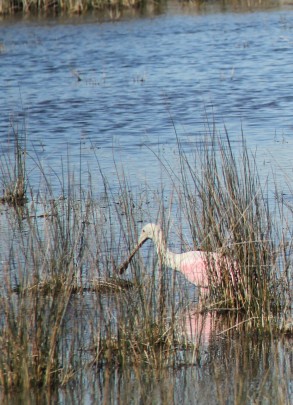
The refuge contains a variety of habitats including hardwood hammocks, pine flatwoods, scrub and coastal dunes. Although Florida is quite flat, it is apparent how the vegetation is affected by slight changes in elevation. While driving through the refuge the habitat can transition from being heavily dominated by mangrove trees to a stand of slash pine simply by increasing centimeters in elevations.
Much like any other part of the world, habitat influences the movement of wildlife in the refuge. The scrub is where you will find the aptly named Florida scrub, where as many of the wading birds such as the roseate spoonbill (Platalea ajaja) and the snowy egret (Egretta thula) can be found in the various impoundments. Additionally that is where you can find the American coot (Fulica americana) which is more closely related to the Sandhill crane than ducks.
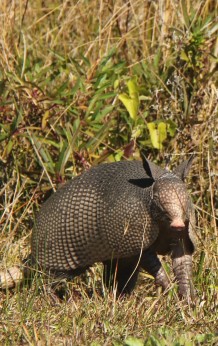
Other wildlife that can be found in the refuge include pygmy rattlesnakes (Sistrurus miliarius), the hispid cotton rat (Sigmodon hispidus) and Florida’s state bird the northern mockingbird (Mimus polyglottos).
One of the highlights of our time at the reserve was seeing the manatees (Trichechus) feeding on seagrass from the manatee observation deck. One of the manatees was covered in barnacles giving you an idea of just how slowly they move.
Although not originally from Florida, it was also exciting to see a nine-banded armadillo (Dasypus novemcinctus) hunting for insects along the side of the road. Over the past century the nine-banded armadillo expanded their range into Florida from Texas. Additionally, between 1920 and 1970 several hundred armadillos were introduced along the Atlantic coast.
Although we did not get to witness any scrub jay chicks, this time lapse video gives you an idea of just how cute they are, as well as how the parents care for their young as they age.
The Kennedy Space Center
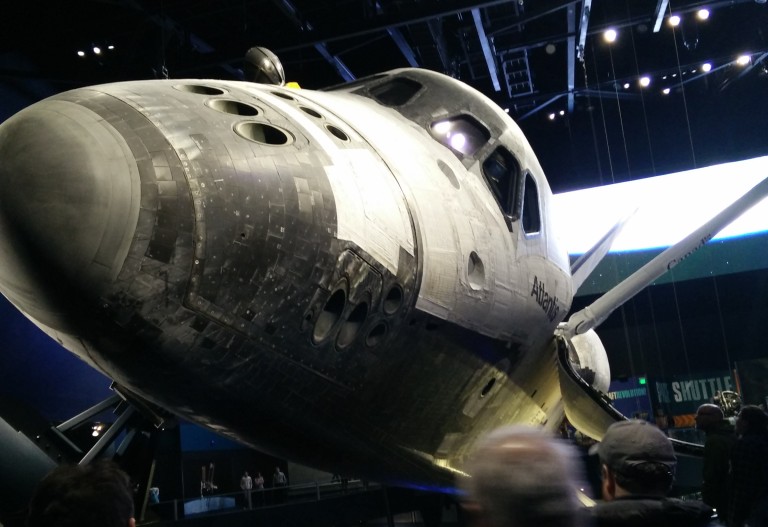
After visiting the wildlife refuge for most of the day, we went to the Kennedy Space Center at Cape Canaveral for the afternoon.
History
The Kennedy Space Centre was funded by President John F. Kennedy in 1963 the height of the Space Race. It is home to the vehicle assembly building which is the tallest one story building in the world housing 70 different lifting devices. It is also where the Space Launch System and mobile launcher are being constructed to send humans to Mars. Also located on Cape Canaveral is launch pad 39A which is the Launchpad for the Apollo program, Skylab and the first space shuttle mission.
Apollo and Atlantis
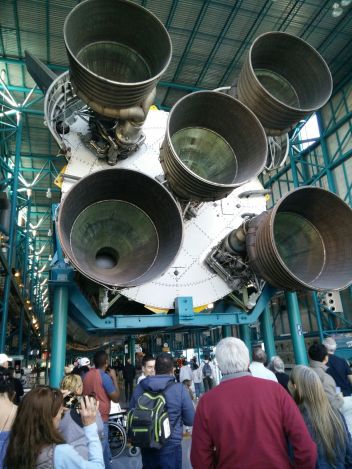
While at the space center we learned about the Apollo Mission and the launch of the Appollo spacecraft to the moon using the world’s largest rocket, the Saturn V. Standing at a combined 111 meters tall, the rocket weighed 6.5 million pounds when fully fueled.
Another space shuttle we got to see was the Space Shuttle Atlantis which was built to be the first reusable space shuttle. In order to be light enough to launch into space, the heat shield of the shuttle was made from silica foam tials and it had an expendable fuel tank. It was also designed to be a glider that could be shipped back to Florida on the back of an airplane should it land in the wrong part of the world upon re-entry to Earth.
Cape Canaveral Grounds
On a bus tour around the grounds of the Kennedy Space Center along with seeing various launch pads, the vehicle assembly building and a mobile launcher, we encountered more wildlife including a juvenile endangered brown pelican (Pelecanus occidentalis) cleaning its pumage and an American alligator warming itself in the sun in a ditch.
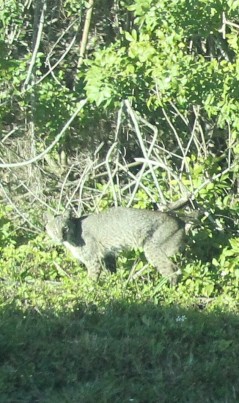
The most exciting animal we saw on the tour was the bobcat (Lynx rufus). It was an unexpected sight because they are nocturnal animals and it was midday when we saw it. It is possible the bobcat was hunting for rabbits, squirrels or rats, which are their primary prey.
While driving around the grounds, it is evident the impact wildlife have on the area. Fences had to be constructed in an attempt keep animals such as alligators out of areas as a safety precaution for humans and to protect the animals from getting crushed large equipment.
The highlight of trip to the Kennedy Space Center was seeing the SES-9 spacecraft that is a part of the Space X Falcon 9 project. It was exciting to see a spacecraft that was scheduled to get launched into space the next day and witness a part of space exploration history.
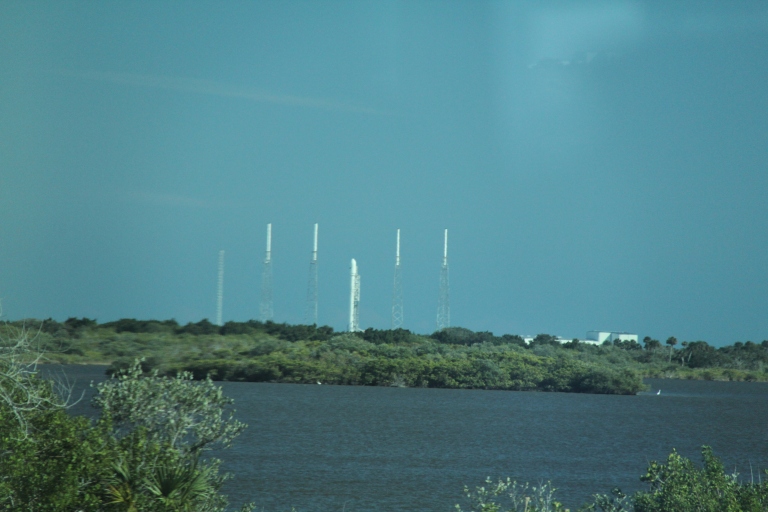
To get an idea of what we experienced while visiting the Kennedy Space Centre, please watch this video.
References
4-H Forest Resources 2016. Slash Pine. [Online]. Available at: http://sfrc.ufl.edu/extension/4h/trees/Slash_pine/index.html. Accessed: March 20 2016.
Schaefer, J.M. & Hostetler, M.E. 2015. The Nine-Banded Armadillo (Dasypus novemcinctus). [Online]. Available at: https://edis.ifas.ufl.edu/uw082. Accessed: April 24 2016.
Tate, K. 2012. NASA’s Mighty Saturn V Moon Rocket Explained (Infographic). [Online]. Available at: http://www.space.com/18422-apollo-saturn-v-moon-rocket-nasa-infographic.html. Accessed: March 21 2016.
U.S. Fish & Wildlife Service (eds). 2015. Merritt Island National Widlife Refuge. Pamphlet edn. U.S. Fish & Wildlife Service: U.S.
U.S. Fish & Wildlife Service 2015. Merritt Island National Wildlife Refuge : Habitats. [Online]. Available at: http://www.fws.gov/refuge/Merritt_Island/Habitats.html.aspx. Accessed: March 20 2016.
U.S. Fish & Wildlife Service 2015. Merritt Island National Wildlife Refuge : Wildlife & Habitat. [Online]. Available at: http://www.fws.gov/refuge/Merritt_Island/wildlife_and_habitat.html. Accessed: March 20 2016.

Shantell–we are coming from Tampa and want to do the Merritt Island NWR and Kennedy Space Center–I know one is in Titusville–do I have t go to Merritt Island to get to the space center–thanks for your help as we are trying to decide where to get a hotel
LikeLike
Hello Susan,
In order to get to the Kennedy space center from the wildlife refuge or vice versa, you have to leave the island and take the US-1 along the coast. Although they are on the same island I think part of it is blocked off to the public and that is why you have to travel between the two on the mainland. That said, it’s only about a 30min drive to get from one to the other.
I hope that helps,
Shantelle
LikeLike
Thanks I didn’t know if I could do both in one day
Sent from my iPhone
>
LikeLike